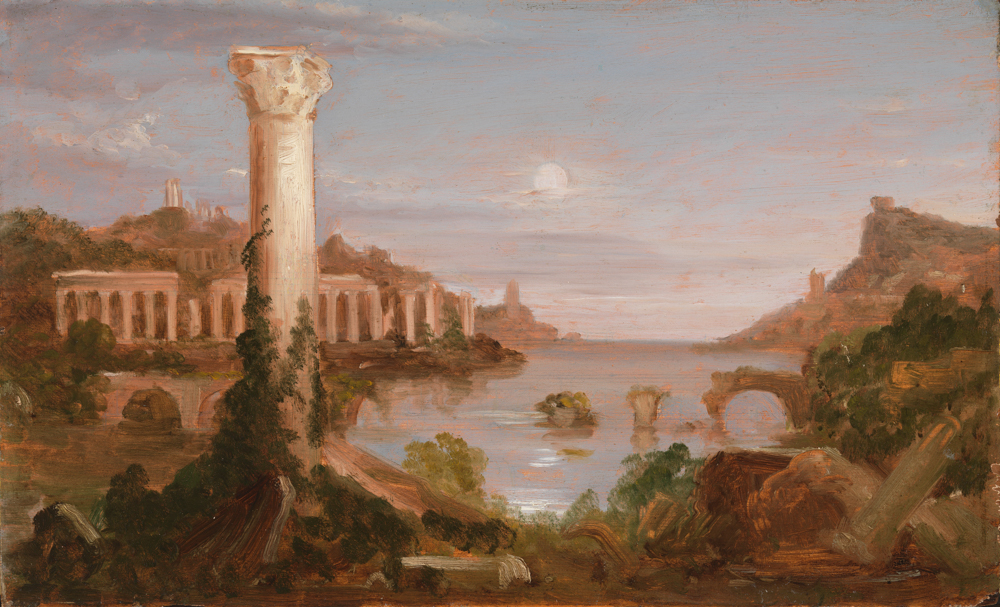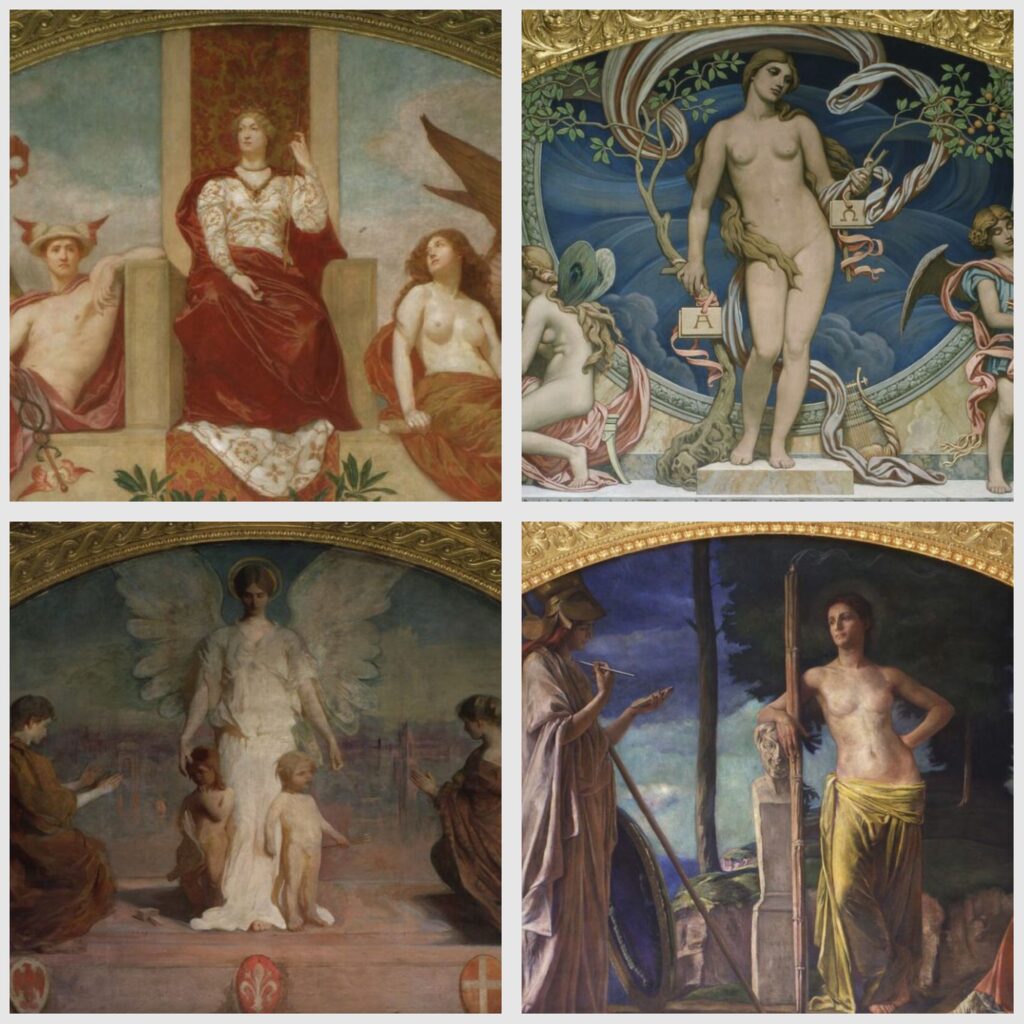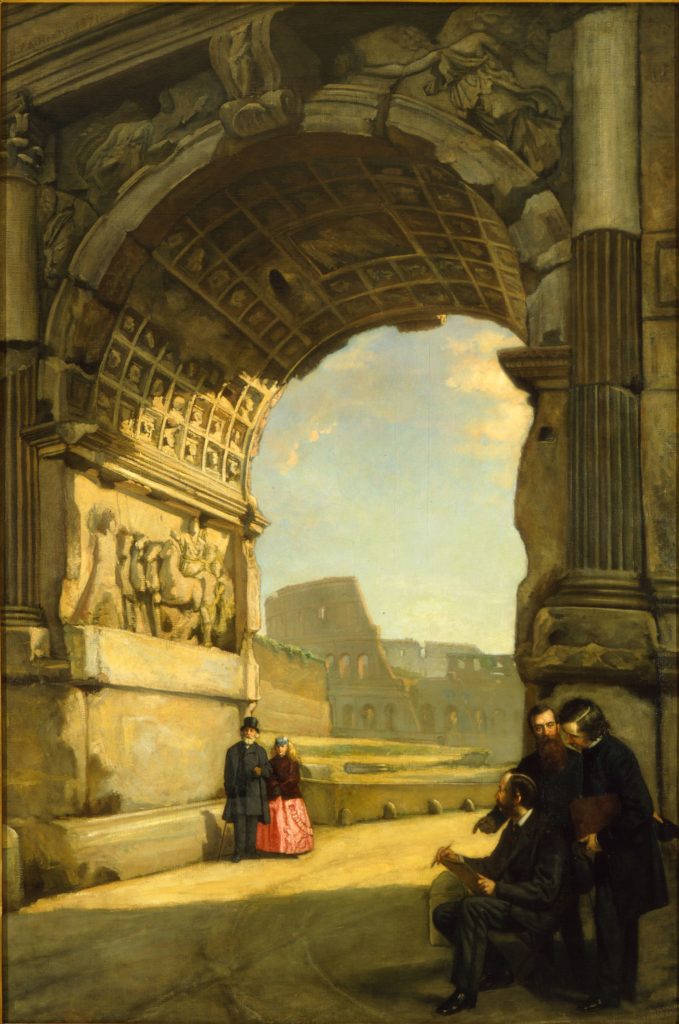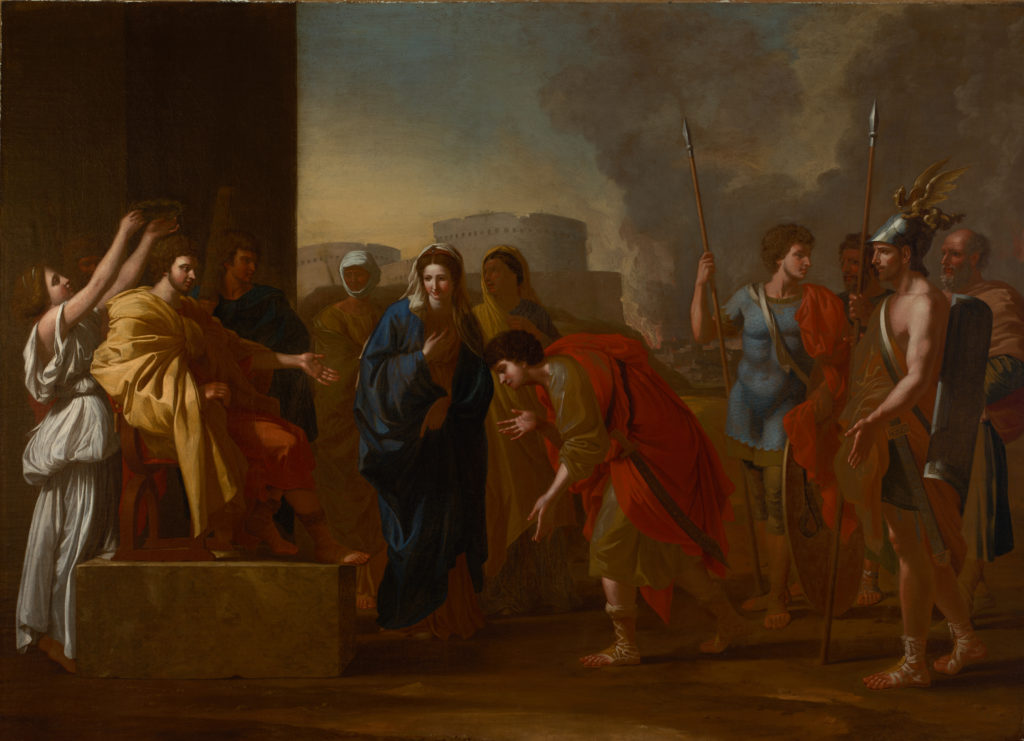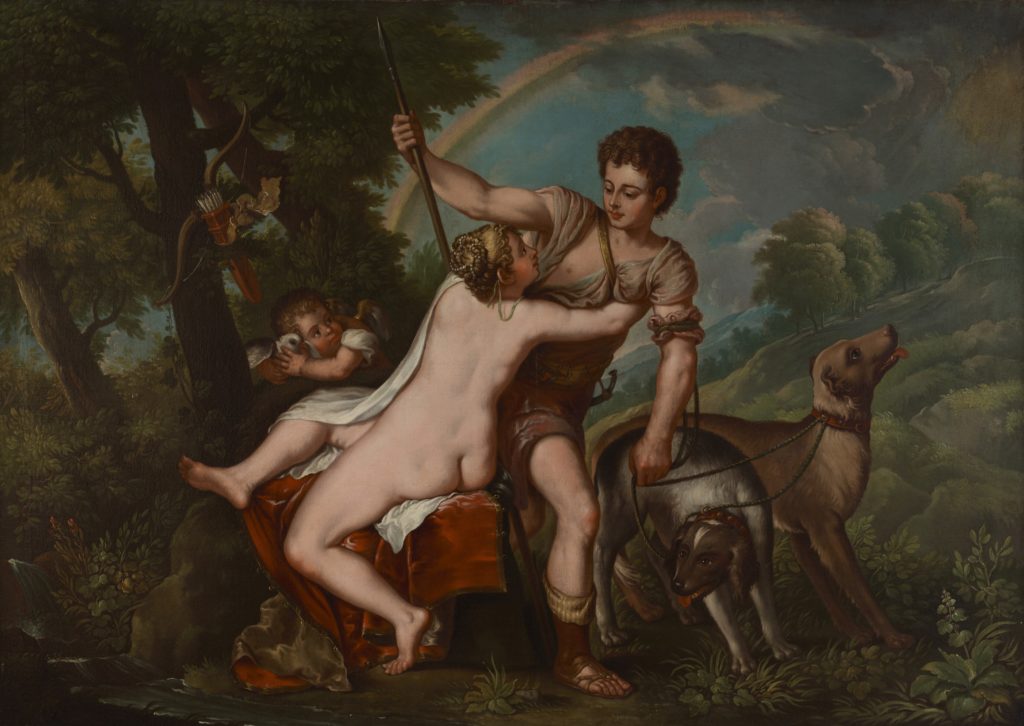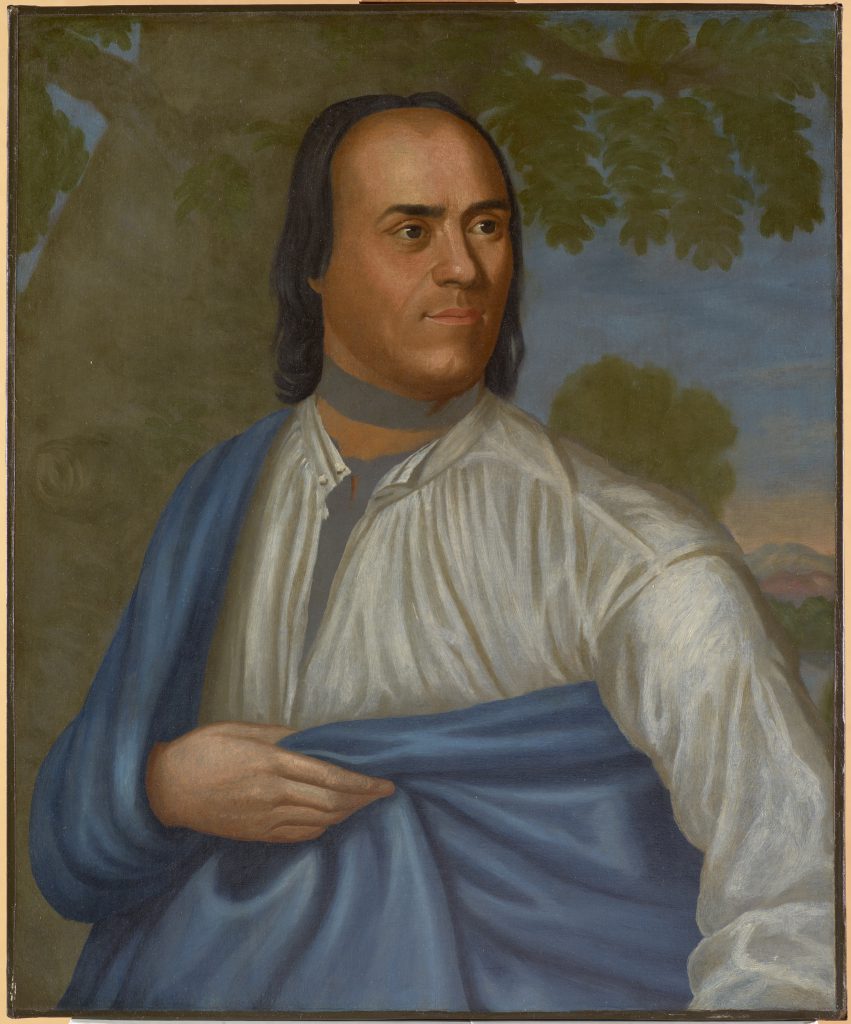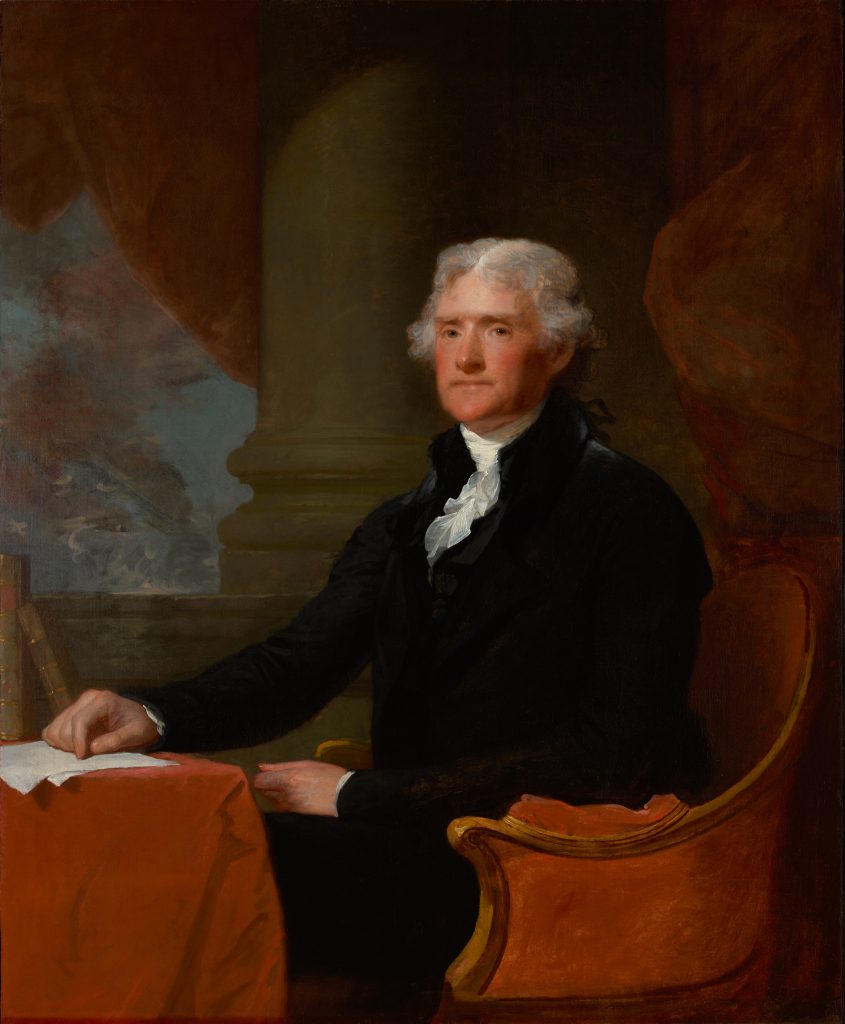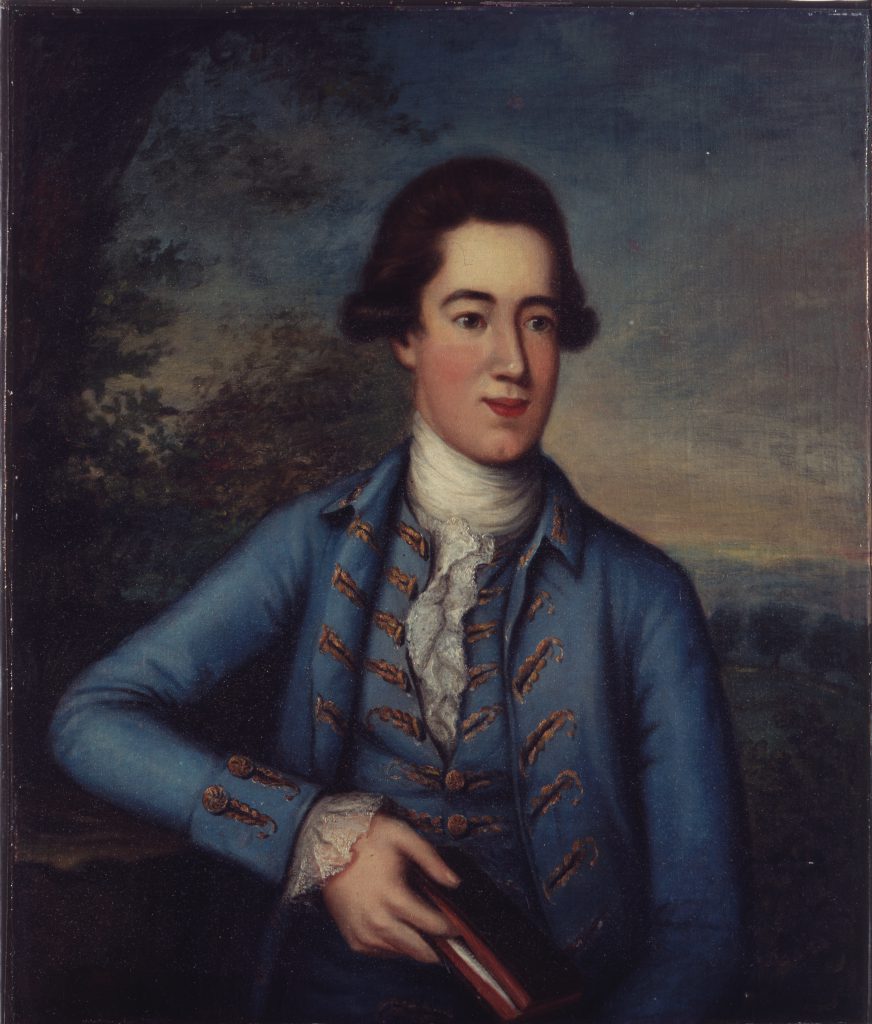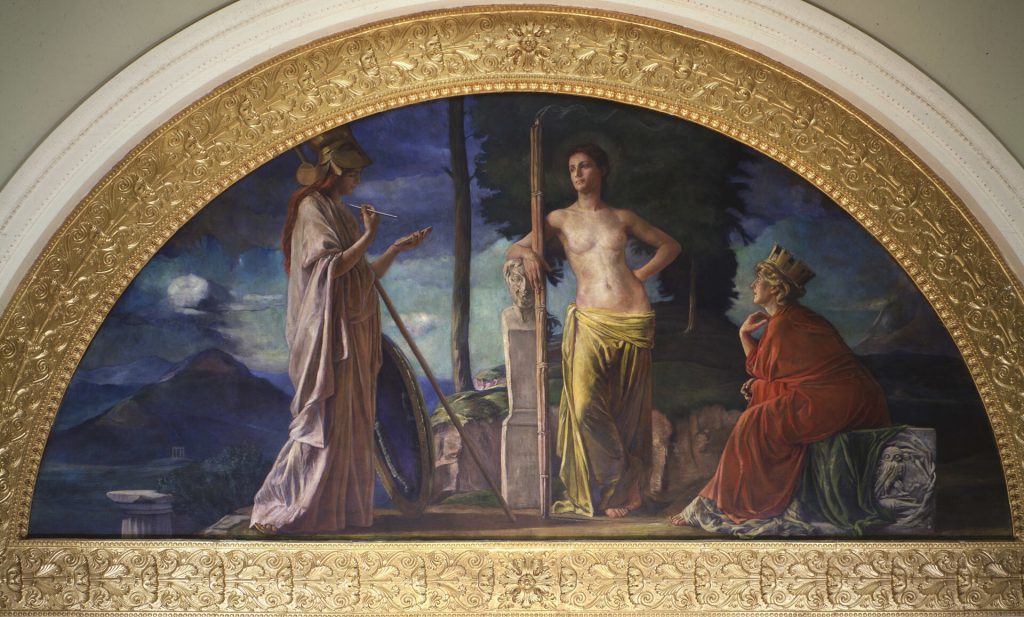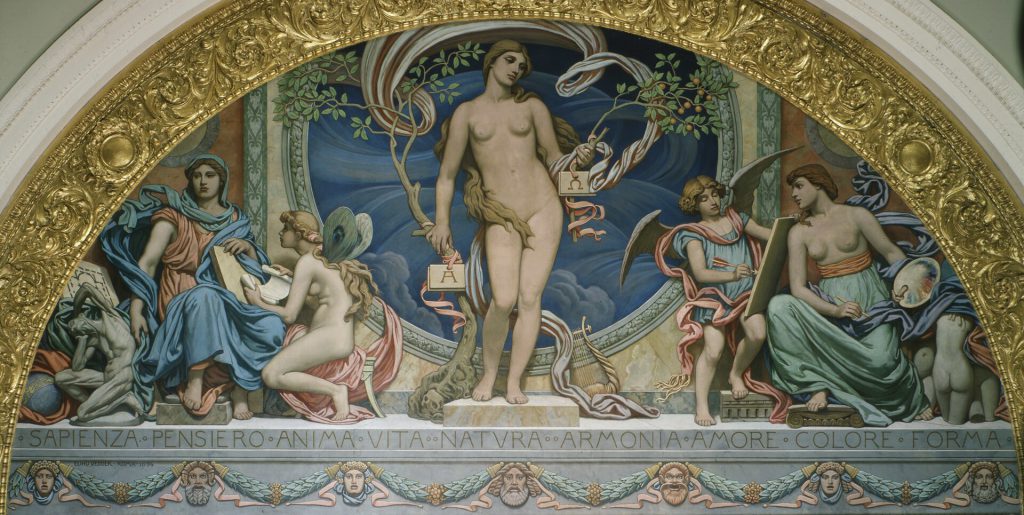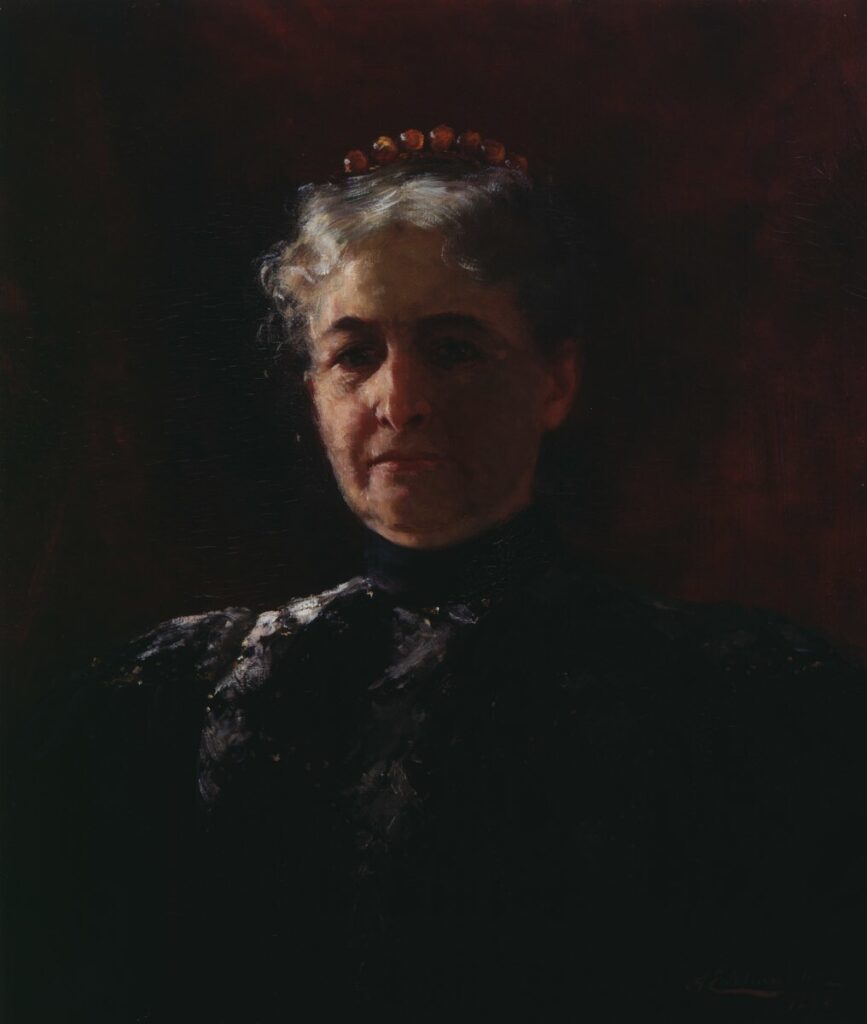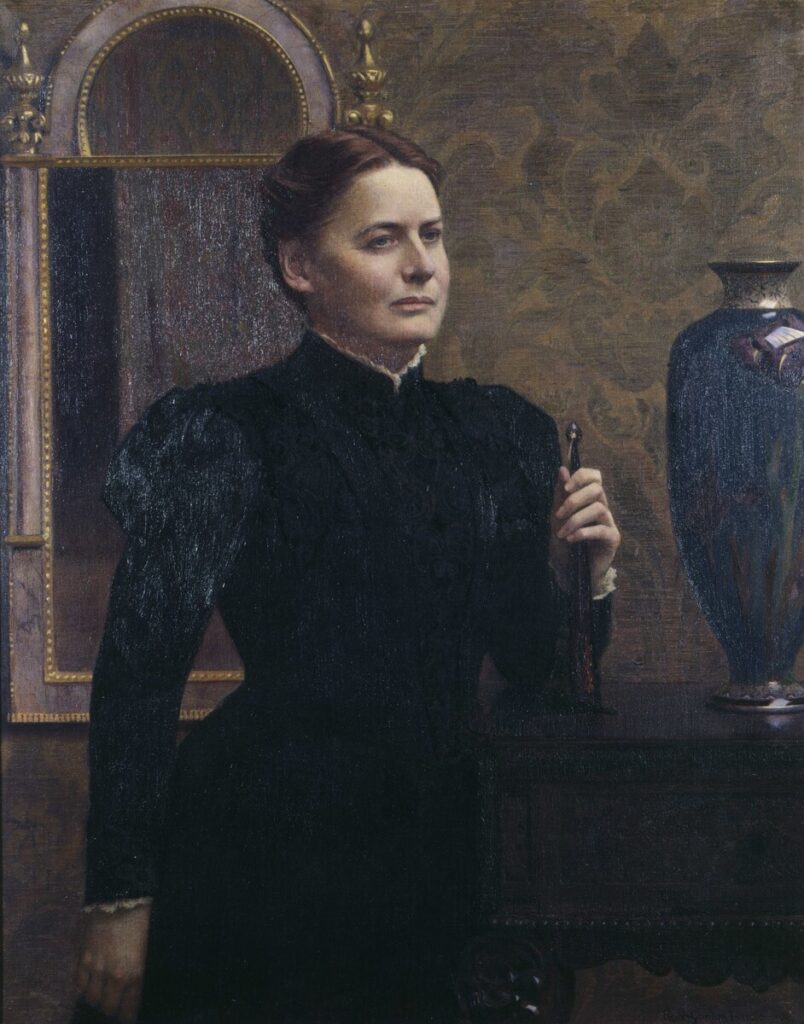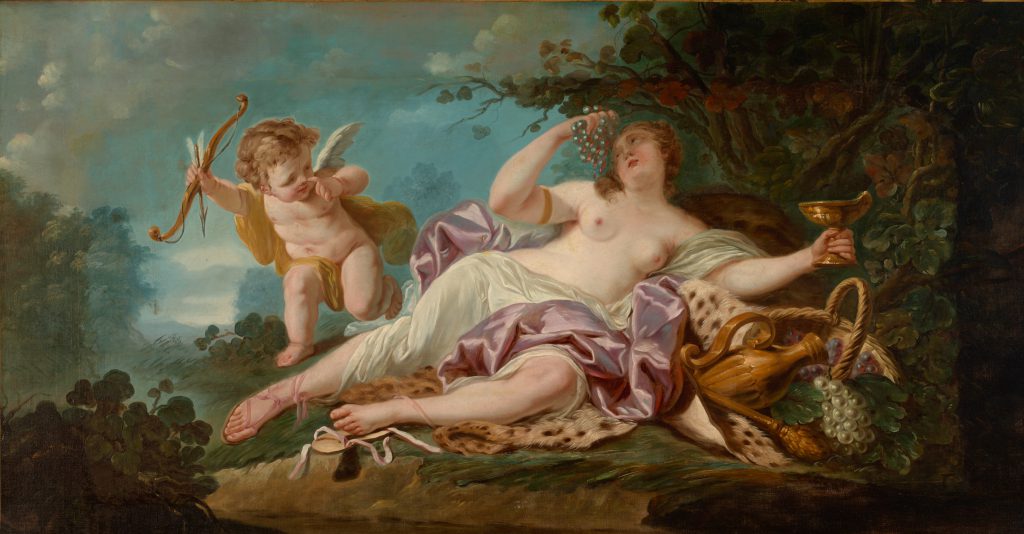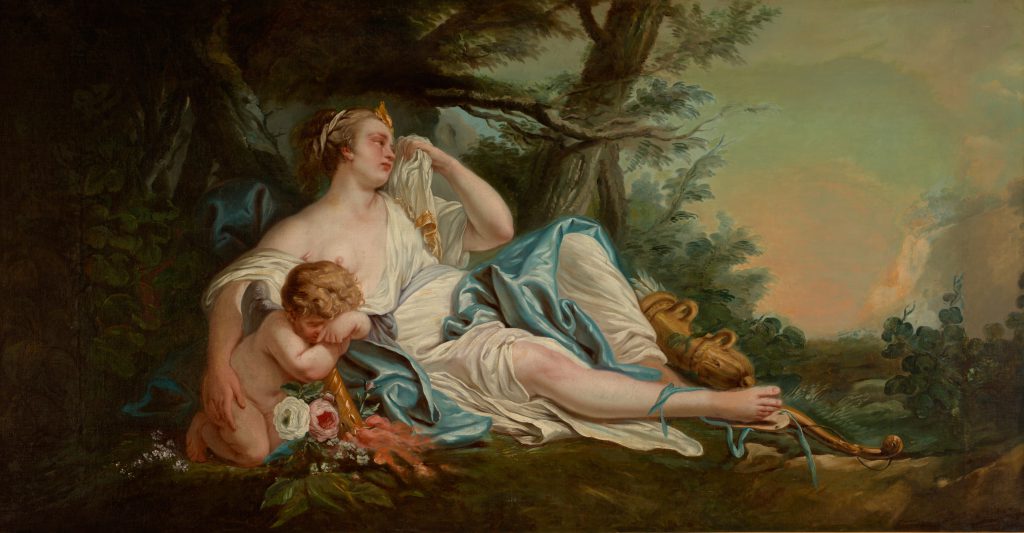Study for Desolation, from The Course of Empire
McGuigan Collection
This small oil painting is a study for one the grandest artistic responses to the ancient world ever undertaken by an American artist: The Course of Empire, a five-painting cycle by the American landscape painter Thomas Cole. Painted between 1833 and 1836, the series depicts the rise and fall of a human civilization. The civilization depicted in Course of Empire is closely modeled not only on the landscape and architecture of ancient Rome but also its historical trajectory, from its agrarian and Republican roots captured in The Pastoral or Arcadian State to its imperial grandeur and wealth depicted in The Consummation of Empire and finally to its fall and present decay. This oil sketch is a study for the final painting of the cycle, Desolation, which represents the full circle return to nature of a society and civilization following its catastrophic collapse. Painted at a time when America was expanding—both domestically westward and on the international scene—Cole’s paintings have long been understood to hold up the earlier agrarian ideal of America in the face of contemporary developments and Jacksonian democracy.
America’s preeminent landscape painter of the early nineteenth century and founder of the Hudson River School, Thomas Cole was deeply influenced by his travels in Europe between 1829 and 1832. There, Cole explored the ancient ruins of the continent and encountered antiquarian culture at its height. The Course of Empire cycle, painted shortly after the artist’s return to the United States, is best understood in light of these travels and the classicizing art and culture Cole encountered in Italy and England, to which the cycle stylistically responds. His experiences of European society also inspired the artist to reflect on American progress and the destiny of the United States. Clues to Cole’s intentions for the cycle can be found in his writings and lectures of the period, which comment on the industrialization of Europe and the encroachment of modernity on the “sublimity of wilderness.” He warns of the need to preserve the natural splendor of America, a popular subject of Romantic artists and authors of the period. In Cole’s cyclical (and pessimistic) understanding of history, the luxury and extreme wealth depicted in Consummation ended, inevitably, in the corruption and decline captured in Destruction and Desolation. This final painting of the series, Desolation depicts a romanticized version of the ancient Roman ruins that had become increasingly familiar to Americans.
